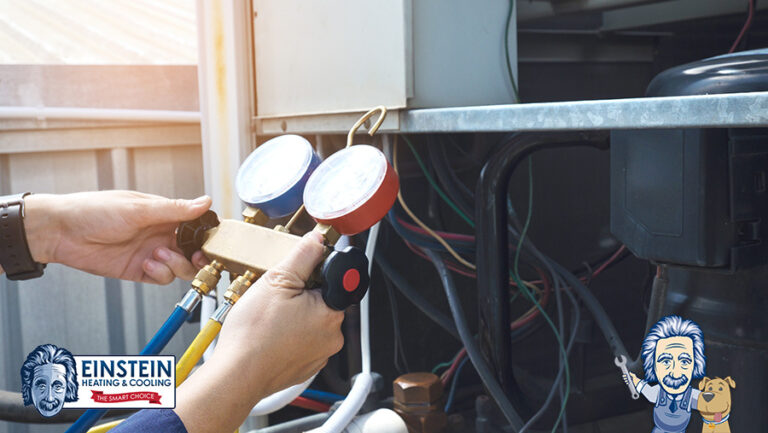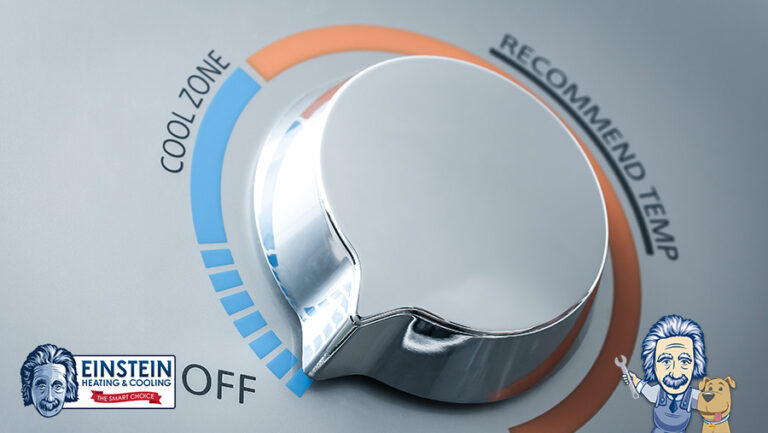
At Einstein Heating and Cooling, we understand the importance of regular cooling system maintenance to ensure optimal performance and longevity. Our expert technicians specialize in providing comprehensive maintenance services for all types of cooling systems. From air conditioners to heat pumps and ductless mini-split systems, we have the knowledge and expertise to keep your cooling system in top shape. Our maintenance services include tasks such as cleaning coils, checking refrigerant levels, inspecting components, and ensuring proper airflow.
Air conditioning systems are essential for comfort, especially during the hot summer months. To ensure that they function correctly and efficiently, regular comprehensive maintenance checks are necessary. These checks include cleaning condenser coils, checking refrigerant levels, calibrating thermostats, and ensuring proper airflow.
Condenser coils are an essential part of an air conditioning system, and cleaning them is a crucial aspect of comprehensive maintenance checks. Condenser coils remove heat from the air, which is then released outside. Over time, they can become dirty and covered with dust, dirt, and debris, reducing their efficiency. Dirty coils can cause the system to work harder, consume more energy, and eventually break down.
Cleaning the condenser coils is a process that involves removing dirt and debris from the coils to ensure that they operate correctly and efficiently. Technicians use special brushes and cleaning solutions to remove dirt and debris from the coils. The process may also involve using a pressure washer to remove tough debris.
The following are the steps involved in cleaning condenser coils:
Cleaning the condenser coils is a vital aspect of comprehensive maintenance checks on air conditioning systems. Regular cleaning can improve the efficiency of the system, reduce energy consumption, and extend the life of the system. Homeowners and property managers should schedule regular maintenance checks with trained technicians to ensure that their air conditioning systems are clean and functioning correctly.
Checking refrigerant levels is another essential aspect of comprehensive maintenance checks on air conditioning systems. Refrigerant is a chemical compound that is responsible for absorbing heat from the air inside the building and transferring it outside. If the refrigerant levels are too low, the air conditioning system will not function correctly, and the building will not be properly cooled.
Low refrigerant levels can also cause the compressor to work harder, leading to increased energy consumption and higher electricity bills. If the problem is not addressed promptly, it can lead to more severe problems, such as a complete breakdown of the system.
The following are the steps involved in checking refrigerant levels:
Checking refrigerant levels is an important part of comprehensive maintenance checks on air conditioning systems. Regular checks can ensure that the system is functioning correctly, reduce energy consumption, and extend the life of the system. Homeowners and property managers should schedule regular maintenance checks with trained technicians to ensure that their air conditioning systems have the correct refrigerant levels and are functioning correctly.
Calibrating thermostats is another important aspect of comprehensive maintenance checks on air conditioning systems. Thermostats are responsible for controlling the temperature of the building and ensuring that the air conditioning system turns on and off as needed to maintain a comfortable temperature. Over time, thermostats can become inaccurate, leading to incorrect temperature readings and reduced efficiency.
Calibrating thermostats involves adjusting them to ensure that they are accurately measuring the temperature and communicating with the air conditioning system correctly. This ensures that the system is functioning efficiently and that the building is being properly cooled.
The following are the steps involved in calibrating thermostats:
Calibrating thermostats is an essential part of comprehensive maintenance checks on air conditioning systems. Regular calibration can ensure that the system is functioning correctly, reduce energy consumption, and extend the life of the system. Homeowners and property managers should schedule regular maintenance checks with trained technicians to ensure that their thermostats are calibrated correctly and that their air conditioning systems are functioning correctly.

Ensuring proper airflow is crucial to maintaining the efficiency and effectiveness of an air conditioning system. Airflow refers to the movement of air through the system, which is necessary to cool the air and distribute it throughout the building.
A lack of proper airflow can cause a range of issues, including reduced efficiency, increased energy consumption, and even system failure.
The following are the steps involved in ensuring proper airflow:
Ensuring proper airflow is an important part of comprehensive maintenance checks on air conditioning systems. Regular checks can ensure that the system is functioning correctly, reduce energy consumption, and extend the life of the system.
Homeowners and property managers should schedule regular maintenance checks with trained technicians to ensure that their air conditioning systems have proper airflow and are functioning correctly.
Comprehensive maintenance checks on air conditioning systems can provide a range of benefits for homeowners and property managers. Here are some of the key benefits of regular maintenance checks:
Regular maintenance checks on air conditioning systems can provide a range of benefits for homeowners and property managers.
By improving efficiency, extending the lifespan of the system, improving air quality, reducing downtime, and saving money, regular maintenance checks can help to ensure that air conditioning systems are functioning correctly and providing the comfort and convenience that people need.
It is recommended that homeowners and property managers schedule regular maintenance checks with trained technicians to ensure that their air conditioning systems are functioning correctly and efficiently.
Comprehensive maintenance checks are essential for the proper functioning and longevity of air conditioning systems. Cleaning condenser coils, checking refrigerant levels, calibrating thermostats, and ensuring proper airflow are critical aspects of maintenance checks.
Regular maintenance not only improves the efficiency and lifespan of the system but also helps to maintain indoor air quality and provides peace of mind.
Therefore, homeowners and property managers should prioritize regular comprehensive maintenance checks to ensure that their air conditioning systems operate correctly and efficiently for years to come.
Are you ready to transform your entrepreneurial aspirations into a tangible venture and embrace the exciting realm of franchise ownership? With a few decisive moves, you could be on the fast track to extraordinary success. Don’t hesitate any longer; embark on your path to becoming the proud boss of your very own business today!
